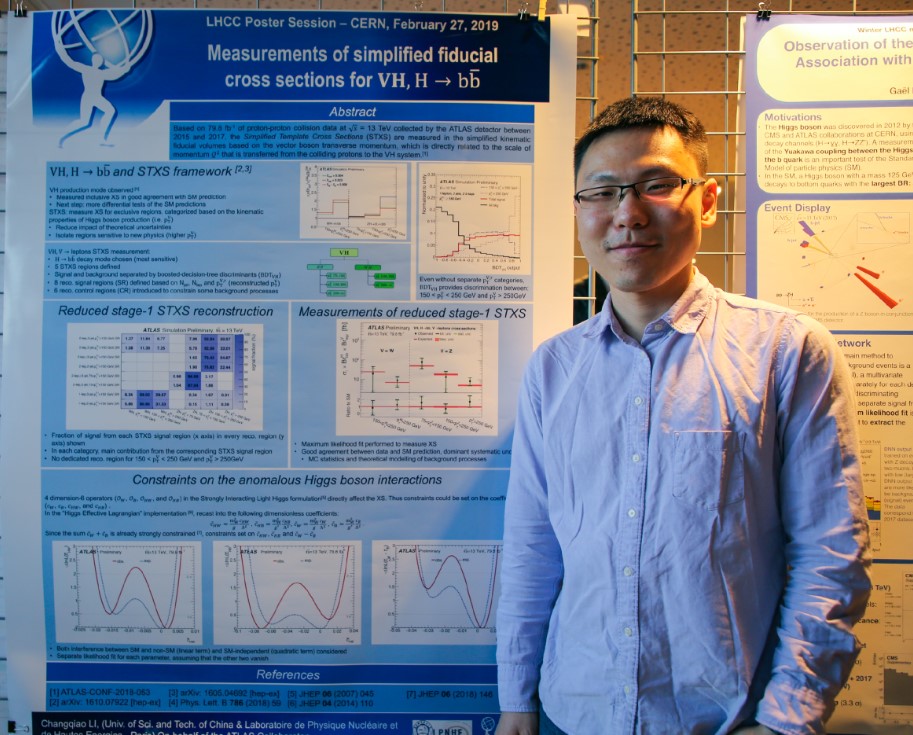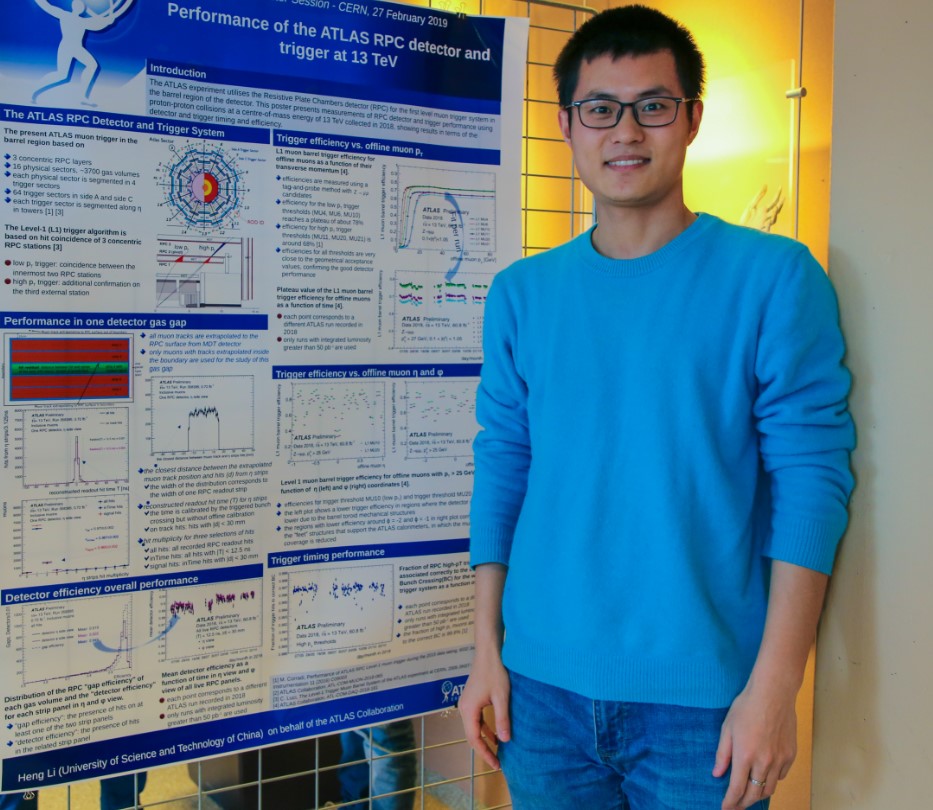News and Events
LHC students poster session
27-28 February
USTC students participated in the annual poster session at the 137th LHCC Meeting. It dedicated to the most recent physics results from the LHC experiments.

Changqiao Li (Measurements of simplified fiducial cross sections for the associated production
of a weak gauge boson and a Higgs boson decaying to a
pair of b quarks in ATLAS) link -
Changqiao
STXS LHCC2019 Ver04.pdf
I graduated last November. I studied in the LPNHE-Paris and USTC, I was a join PhD student. Now it is my second
poster session in CERN. My area of
interest is ATLAS Higgs study and also the detector related stuff. I am studying the association production of Higgs
boson with a W/Z boson and also
the b-tagging calibration of the ATLAS.
My poster is about the Higgs simplified template cross section measurement for the VH production mode. It is
performed in the Higgs to bb decay mode.
During the session several questions about my work were asked. Some of them were about motivation of the
measurement: I answered that we could
explore the BSM physics via this measurement since some of the exclusive region (high PTV) is sensitive to the new
physics. As for some details about
the measurement, for example how the constrain set on the coefficients: through the simultaneous fit.
Now for me it is the period between Ph.D career and the postdoc career, and I am seeking the postdoc position, and
this research is performed during my
PhD. I think actually I won't continue this topic. Because for the future plan, I would prefer to do some work on
the detector related, since my work
during my PhD has nothing directly to do with detectors. I am more interested in, for instance, the readout system
of the detector and some online
trigger system designed with FPGA (now it is very popular since it is faster to process the data parallel).

Heng Li (Performance of the ATLAS RPC detector and trigger at 13 TeV) link - ATLAS Poster LHCC 2019 02.pdf
I am now a PhD student at the third year. I study in US TC and am interested in the experimental particle physics and computer science. I am focusing on
WH (to WW) analysis which is my main project for the graduation. It is not the first time for me to present a poster. I also had a poster during the LHCC
students poster session last year and the ATLAS week poster session this year.
This poster is about the performance of the ATLAS RPC detector and trigger performance during 2018 data taking. The alignment, timing study and
efficiency for the detectors and triggers are presented. The study on each detector gas gap is very important and useful for reporting the RPC detector
issues to the experts and would help us to know the details of the detector operation performance. As for the trigger efficiency, we use the Z tag and
probe method which measures the efficiency without any bias.
I some questions during the session. They were mainly about the structure of the RPC detector in ATLAS. I explained the structure as it was showed in
the first part of my poster: there are 3 concentric RPC layers in the banel region of ATLAS separated in 16 sectors along phi coordinate, only middle
layer were out layer are with RPC ananged.
Also there was a question about points abcense in several periods in the time evolution plot. That is because they are during either the machine
development period or the technical stop period when we didn't have any beams or collisions.
There was question regards he trigger efficiency, why it is relatively lower with respect to the detector efficiency. I explained this was due to the
acceptance and the trigger efficiency was very close to the geometrical acceptance values, confi1ming the good detector performance.
AS about my future I am planing to focus on my analysis work in the next years because I need it to finish my thesis. And I will still follow some work
on RPC performance work.